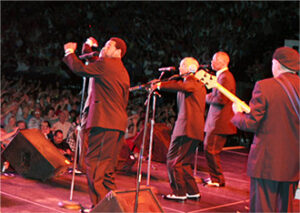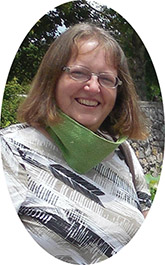Get ready to travel back in time with a night of unforgettable music at the Oceanfront Arena inside the Wildwoods Convention Center. The Greater Wildwood Chamber of Commerce presents the 20th annual ‘50s, ‘60s and ‘70s Weekend on Friday, Oct. 18 and Saturday, Oct. 19 in the Wildwoods, New Jersey. This two-day extravaganza celebrates the iconic eras of the 1950s and beyond, while also honoring the pivotal role the Wildwoods played in the birth of Rock ‘n Roll music.

The weekend kicks off on Friday night, Oct. 18 inside the Wildwoods Convention Center with a ‘50s Dance Party featuring The Cameos, who will have you dancing the night away to classic oldies. The Dance Party, reminiscent of the Sock Hops of the ‘50s and ‘60s, takes place 6:30-10:30 p.m. and admission is $20 per person.
Saturday, Oct. 19 will feature a full day of outdoor fun and music during the FREE Street Fair at Fox Park, located across from the Wildwoods Convention Center on Ocean Ave., from 11am to 5pm. The Street Fair will include live entertainment throughout the day featuring the great sounds of the ‘50s, ‘60s and ‘70s with Animal House, Living Proof, and The Deck Band performing. Enjoy a variety of vendors offering memorabilia, merchandise, many delicious food options, and much more. A classic car show will be held at the circle in front of the Wildwoods Convention Center across from Fox Park from 9 a.m. to 3 p.m.
The highlight of the weekend is the ‘50s, ‘60s and ‘70s Concert taking center stage at the Oceanfront Arena in the Wildwoods Convention Center on Saturday, October 19 at 7 p.m. This star-studded musical lineup features Mr. Frankie Avalon performing hits like “Venus,” “Why,” “I’ll Wait for You,” and “Beauty School Drop Out.”
Also gracing the stage are The Lettermen, known for their classics, “Goin’ Out of My Head,” “The Way You Look Tonight,” “Put Your Head On My Shoulder,” “Theme From a Summer Place,” and “When I Fall In Love.”
The Shirelles starring Beverly Lee will captivate the audience with their melodies, including “Dedicated to The One I Love,” “Tonight’s The Night,” “Will You Still Love Me Tomorrow,” and “Mama Said.”
The event is hosted by The Voice of Tribute, starring Tommy Cono as the voice of Frankie Valli, Lou Christie, Bobby Darren, and Frank Sinatra. Expect Tommy C. to sing timeless classics from each of these iconic artists. Doors open at 5 p.m. for the concert and an unforgettable night of music and nostalgia.
For those eager to secure their tickets or gather additional information, stop by the Greater Wildwood Chamber of Commerce at 3306 Pacific Avenue in Wildwood, visit www.Wildwoods.com, or call 609-729-4000. Tickets are also available through Ticketmaster at www.ticketmaster.com and all Ticketmaster locations. A limited number of tickets will be available at the Wildwoods Convention Center Box Office the weekend of the event.
For additional information, visit www.gwcoc.org or call 609-729-4000.





